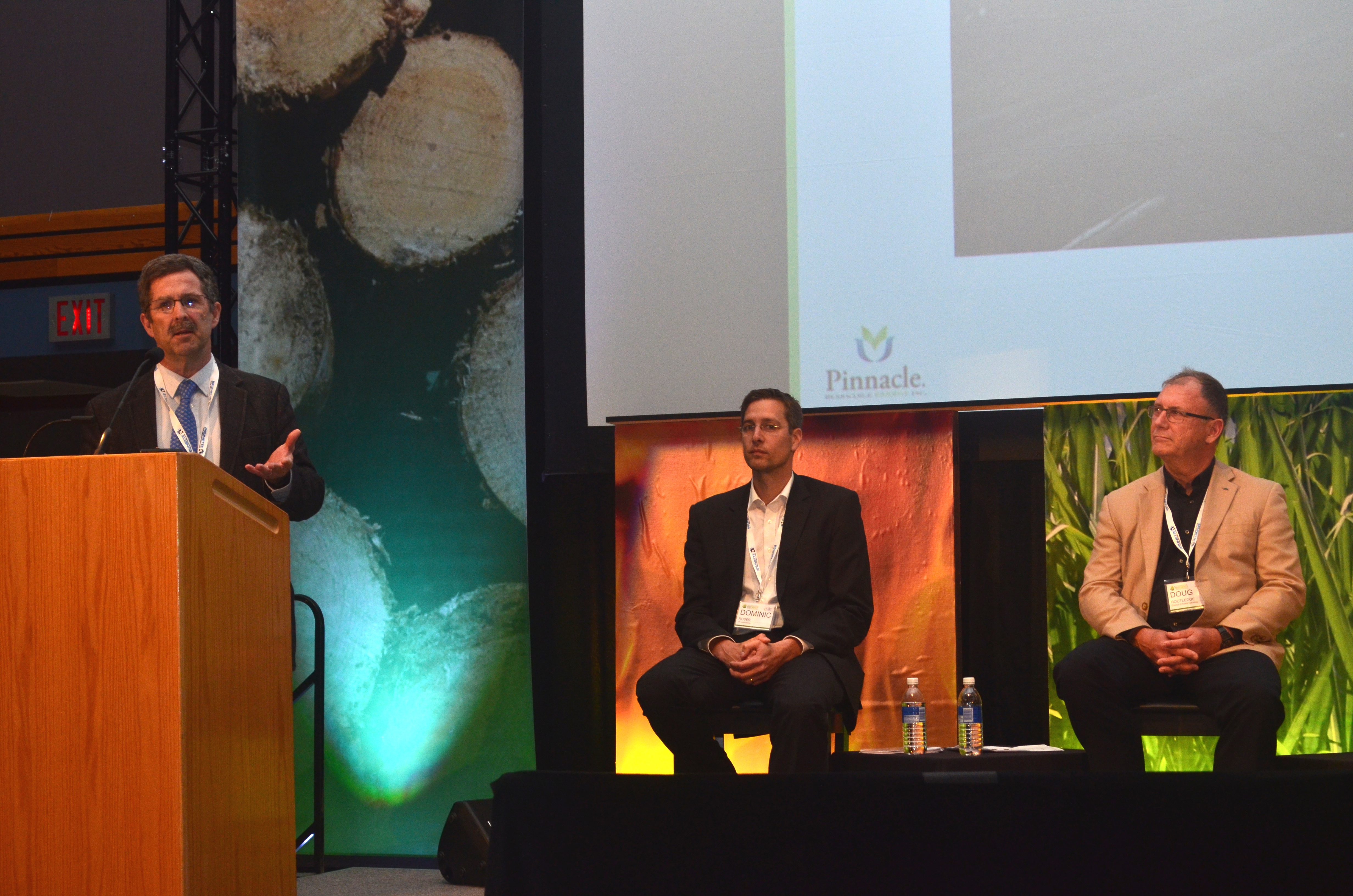
Fibre availability and access: challenges and opportunities
June 16, 2016
By
Andrew Snook
June 16, 2016 – One of the hottest topics for bioenergy producers, access and available of fibre, took centre stage during an experts panel at the International Bioenergy Conference and Exhibition in Prince George, B.C.

Dave Peterson, ADM for Ministry of Forests, Lands and Natural Resource Operations, kicked off the panel discussion by discussing challenges and opportunities surrounding fibre availability and access.
Peterson discussed the various fibre supply challenges in B.C., including a decline in availability of sawmill residuals; declining fibre harvesting; constantly changing market conditions; the economically availability access to residual fibre and society’s changing desires around environmental stewardship.
He also touched upon the 13-point Forest Fibre Action Plan briefly, which includes recommendations for improving the harvesting of residuals through initiatives such as supplemental forest licenses for harvesting woody biomass.
One of the ways Peterson said is being reviewed to help supply bioenergy producers with additional fibre is through wildfire management by clearing stands affected by wildfire or at high risk of wildfire. Peterson added that there’s still a lot of challenges related to securing economically viable fibre from the bush for secondary users.
“In terms of harvest residuals, we’ve got a long way to go,” he said. “There’s lots of opportunities there… but only a small part of that opportunity is currently economic.”
Rob McCurdy, CEO of Pinnacle Renewable Energy discussed the utilization of fibre for wood pellets and stressed the need for finding an economically sustainable way to harvest residuals in the bush.
“How can we get that fibre and use it effectively?” he said.
Pinnacle recently curtailed its pellet plant in Quesnel, B.C. due to a lack of fibre availability. The plant had been in operation since 1989 but was designed to produce pellets using sawmill residuals that are no longer available. McCurdy said his company is currently looking at ways to obtain a long-term fibre supply for the plant in a way that is economically viable so the company can justify investing the necessary upgrades to the facility to produce pellets using non-sawmill residuals.
“The key is what is that fibre basket going to look like so we can put the capital back in and bring that plant back up again?” he said.
McCurdy also touched on the 13-point Forest Fibre Action Plan, stating that the industry has not been able to find a way to translate the action plan into a sustainable supply of fibre for pellet plant producers.
“We made a bold move in the province when we took the beehive burners out,” he said, adding that the industry now needs a bold move for harvesting residuals.
More coverage of the 2016 International Bioenergy Conference and Exhibition:
Prince George expands DES
Bioenergy, an industry in transition
IBCE 2016 comes to Prince George
Bioenergy sector’s opportunities and challenges
Print this page